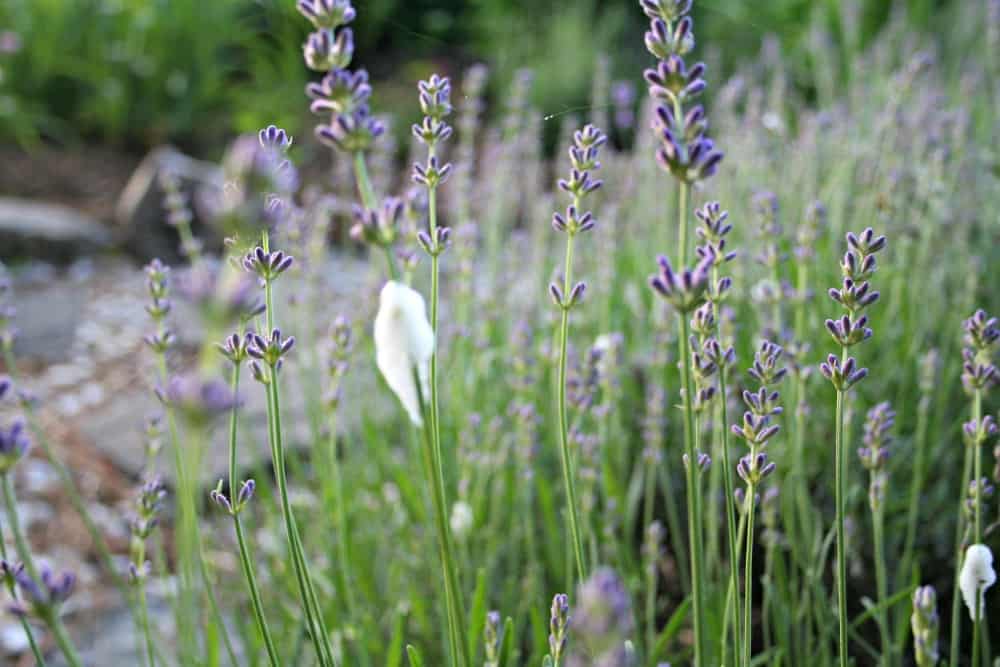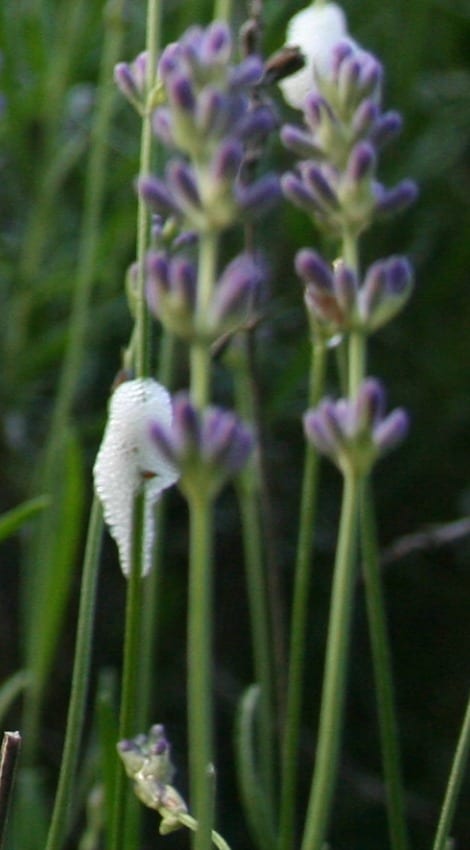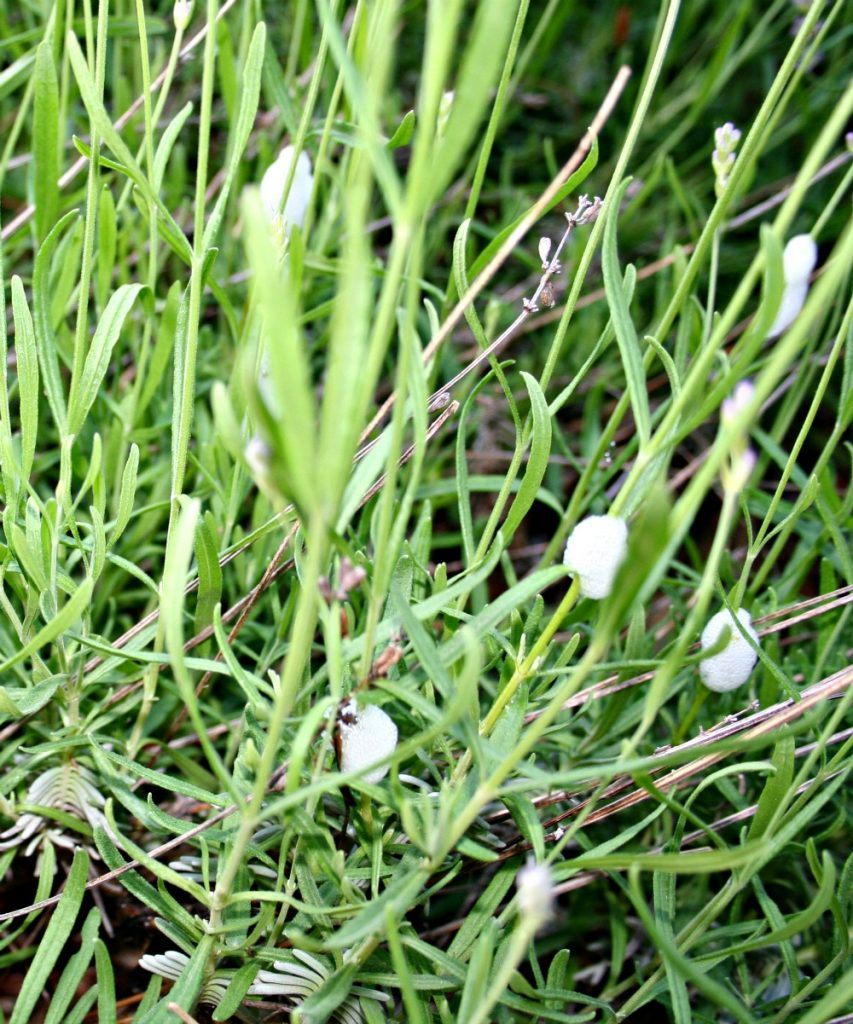What is this foam on my plant? Why does my plant look like it’s lathering up for a good wash?
I walked out into the garden this morning and saw my lavender starting to bloom, which always cheers me up.
My second thought was, “What is this foam on my plant?”
The lavender plants have foam at the stem junction…and not just one plant, but several.

What Is This Foam on My Plant?
A quick search later to “what is this foam on my plant” led me to the answer: spittlebugs.
Haven’t heard of spittlebugs? Don’t worry, not many people have. They are relatively harmless sucking insects, meaning they have a piercing mouthpart that punctures the plant stem and sucks out some sap.
The nymphs secrete a substance which looks like foam. Each bubble of foam actually represents several nymphs, or young, of the spittlebug family.
The good news is that spittlebugs rarely do so much damage to a plant that they hurt it. The other bit of goods news is that they are easy to control through organic methods.
The bads news? They look ugly. But that’s an easy tradeoff.

A colony of spittlebug nymphs on the lavender. They probably won’t do much harm to the plants but they are easy to remove.

Organic Remedy for Spittlebugs
The easiest organic remedy is as close as your garden hose. A blast of water from the hose will wash off spittlebug nymphs quicker than you can say “spittlebug nymphs.”
If that doesn’t work or if you have a large infestation, mix together 2 cups of water, 2 teaspoons of liquid dish soap (make sure it does NOT have bleach). 6 garlic cloves peeled, and 1/4 cup to 1/2 cup diced hot peppers. Puree the ingredients EXCEPT the dish soap; add dish soap last. Let sit for 24 hours then strain the solids. Use a paper towel to wipe the foam off of the plants and then spray the organic liquid onto the plant where you saw the foam.
Wiping the nymphs off removes them. The hot pepper and garlic spray repels future spittlebugs from moving in. To prevent future infestations, it’s also good practice to clean up the garden and remove dead plants in the fall, fallen leaves, and any annuals that have died from a frost in the fall. Removing the dead plant material quickly prevents the insects from over wintering near your plants.
I hope that this helps answer the question “What is this foam on my plant?” Happy gardening!




